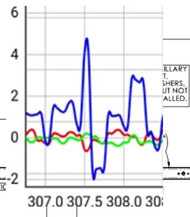The ugly truth and confusion about Class I Hitch Bike Racks and the 1.25" Size
Sep 11th 2023
We get questions daily about using RockyMounts hitch bike racks on Class I hitches as we do not approve our racks for use on Class I. Why? Read below, it requires understanding the loads a rack puts on the hitch and a brief history lesson.
Both Class I and Class II Hitches have a 1.25" square opening, so ours, and everyone elses' will fit in the opening of both Class I and II, but the similarities stop there. When Hitch standards were developed in the 60's, Hitch Bike Racks did not exist. Hitches were for towing trailers only. As bike racks for the hitch became popular, the confusion started as bike racks were never entered into the equation as the standards were already developed. The standards you read about are for towing only. In towing, the trailer's weight is primarily on the road surface. With Bike Racks, all the load is on the hitch.
The big difference is "Tongue Weight". Typically a Class I has a rating of 200 lbs, and a Class II 350 pounds. Class I hitches are usually compromised in their ability to bolt to the frame of the car (not enough space or components that interefer). It appears a bike rack (40lbs for our MonoRail) and two bikes (30lbs each), adds up to 100lbs, and SHOULD be well within the weight rating. Sadly, this combination of bike/rack is over the tongue weight for the reasons below:
1) Tongue weight is measured at the end of the hitch (bumper). The center of mass for the bike rack with bikes is about 18" from that point. The bike rack is now a lever arm and puts more force on the hitch as the weight is farther from the hitch. We estimate the increased load to be 23lbs per inch. That 18" lever force is 414 lbs. Hitch manufactures typically have a safety factor in place, but you are already exceeding capacity before the car even hits the road.
2) Forces from driving on the hitch rack. In testing, we place a tool to measure force (an accelerometer) on the hitch racks and drive at 18mph over a speed bump. The rack can experience force up to 5 G's (see chart above) when your car comes off the speed bump. So you have 100lbs x 5 = 500 lbs of force. Couple this load with the 18" lever arm you have added, you are approaching 1,000 lbs plus of load, above any safety factor.
Once a customer installs a 1.25" rack of ours in a Class I hitch, we usually get an email day one. The customer says "It looks like the rack is going to break" and we get a video of the rack through the rear window of the rack moving considerabley as the hitch is flexing and past the safety factor. The rack will be OK for a while, but one day, the hitch or rack will fail suddenly. Is this two weeks or two years? Depends on road conditions, suspension and tires.
Our recommendations in order:
1) If you have not purchased the hitch yet, a Class III is 2" and solves your problems.
2) Many cars can only have a Class II, this is OK, limit the rack to two bikes and do not use hitch extensions under any circumstances.
3) Some cars only have Class I availability. We recommend a roof rack as you will have a ticking time bomb on the back of your car. The hitch will fail, it's just a matter of when, unless you drive really slow, have light bikes, avoid potholes, speed bumps and bad roads. It is a free world and you can certainly put any 1.25" hitch rack in a Class I, just be ready for poor performance and problems down the road.

